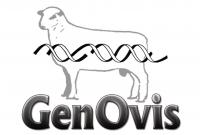EPDs Contributing to Each Index
Expected Genetic Gain
The expected genetic gain, tabulated for the different genetic indexes, represents the genetic progress that can be made by selecting breeding stock within the top 15% of the index.
By selecting the replacements from the top 15% of your herd on genetic index values (ex.CARC index), you can expect to achieve the genetic progress represented in the table within one generation. The results will be that the offspring will have the genetic potential to weigh, on average, +1.4 kg more at 50 days and +2.2 kg more at 100 days than the average lamb of the previous generation. In addition, the offspring will have the potential for a thicker loin of about +1.35 mm and a relatively stable fat thickness (-0.04 mm) compared to lambs of the previous generation.
So, if a group of lambs weighed an average of 30 kg at 50 days, after selection, offspring from these animals should weigh an average of 31.4 kg. Of course, some animals will perform better and others will be worse, but on average the weights of the offspring will be close to 31.4 kg. The performance may be lower if the lambs are not raised under optimal conditions, or even better, if they have more favorable conditions.
